Roundup of the Best Volume Pedals for Guitar 2023
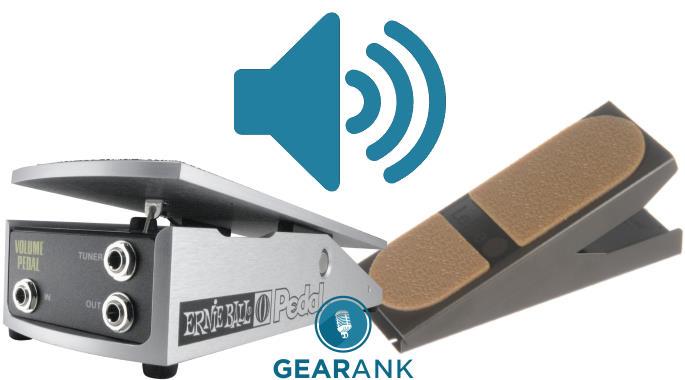
Author & Contributors
Alexander Briones
I have been writing about and researching music gear for many years, all while serving as a music director at my local church. I engage in guitar playing and singer-songwriter stints, in addition to mentoring young musicians and teaching guitar and bass.
Ernie Ball 250K Mono Volume Pedal
Cons
- Cord sensor can sometimes break
Pros
- With taper mode for fast volume swells
- Transparent operation
- Commendable build quality
- Works great with passive pickups
The main distinguishing feature of the Ernie Ball 250K is its taper switch, which you can use to change the volume curve as you rock the pedal.
The first taper mode follows traditional design, providing consistent volume change all throughout its taper. The second mode gradually accelerates the volume changes, which allows for quicker volume swells, boosts, tremolo and similar techniques. This feature appeals to those who utilize advanced volume related techniques.
With an impedance of 250K, it is designed to better handle instruments with traditional non-active pickups. And it does the job with no tone coloration, ideal for those who are sensitive to tone changes. It also comes with a tuner output, which allows you to use a tuner that does not affect your main signal chain.
Build quality is commendable, the unit is solid and road worthy. But note that the movement of the pedal is controlled by a cord, which allows for good control but can sometimes break, especially when swung too hard.
The Ernie Ball 250K Mono is a solid option if you’re looking for a rugged yet flexible volume pedal for passive pickups.
Specifications
- Design: Volume Pedal
- Circuit: Passive
- Best For: Passive Pickups
- Dimensions: 2.75" x 4" x 11"
- Weight: 3 lbs
| Website | Source | *Rating Value |
| Audiofanzine | -Livingroom- | 100/100 |
Demo
Dunlop DVP4 X Mini Volume Pedal
Cons
- Can hard to use in cramped pedalboards
Pros
- Space saving compact profile
- Cordless sensor design
- Solid diecast build quality
- Reliable operation
The DVP4 X Mini is a volume pedal that follows after the compact design of the Dunlop Cry Baby Mini Wah. It sheds off the usual bulk expected of volume pedals, making it easier to integrate into pedalboards.
This small size is a big deal for those who are downsizing their boards. More importantly, it saves you space without compromising performance and build quality. With its diecast exterior this is a compact volume pedal that can take quite the beating. It also doesn't use traditional string sensors, so don't have to worry about caring for and replacing the cord.
Given its compact size, rocking the pedal may require a bit of finesse to avoid accidentally stepping on other pedals in a packed pedalboard. This won't appeal to those who prefer full-sized volume pedals.
In addition to volume control, it can also double as an expression pedal for controlling other effects via its aux output. It even has an internal pot for setting the minimum value of the pedal swing when used as expression controller. You can also use the aux output for plugging into a tuner.
If you're looking for a compact and reliable volume pedal, then definitely consider the Dunlop DVP4 X Mini.
Specifications
- Design: Volume or Expression Pedal
- Circuit: Passive
- Best For: Active Pickups
- Dimensions: 2.5" x 2.97" x 6"
- Weight: 1.28 lbs
| Website | Source | *Rating Value |
| YouTube | 60 Cycle Hum | 95/100 |
Demo
Xotic XVP-250K
Cons
- Tension is fixed
- Awkward size for minimalists
- No adjustments for taper and volume settings
Pros
- In-between size (not too small, not too big)
- Rack and pinion sensor for smooth taper
- Durable and reliable
- Simple operation
The Xotic XVP-250K is a high-impedance volume pedal with a size that's just right, not as small as "minis" and not as big as conventional models. This is great for those who want a slightly smaller volume pedal that they won't have to tip-toe on. It also helps that it's quite light for its size.
Apart from its distinct size, the XVP-250K stands out with its hand-wired construction, complete with cloth-covered wires, this ensures dependability and long use. It's quality construction also translates into good clear sound, with no artifacts or unwanted coloration.
Other noteworthy features include having a dedicated tuner out, nylon pivot bushings for less squeaks and better durability, and the use of rack and pinion that allows for smooth volume taper. This smooth feel makes for easier and pin-point control over volume swells. Unfortunately, there are no adjustments for volume setting, taper and tension, but this also means it's as straightforward as it gets.
The main downside to its in-between size is that it may not appeal to those who prefer minis and traditional volume pedals. But it is definitely worth trying out, especially when considering its overall quality and smooth taper.
Specifications
- Design: Volume Pedal
- Circuit: Passive
- Best For: Passive Pickups
- Dimensions: 2.64" x 3.94" x 8.27"
- Weight: 1.88 lbs
| Website | Source | *Rating Value |
| Premier Guitar | Shawn Hammond | 83/100 |
Demo
Boss FV-500H Volume and Expression Pedal
Cons
- Bulky and heavy
- Not for those who need fast swells
Pros
- Durable and reliable
- Smooth and accurate taper
- Adjustable minimum volume and torque
- Transparent sound
If there’s one thing Boss effects pedals are famous for it's their durability, and this is definitely reflected in the FV-500H. It’s not a piece of gear you’re going to have to worry about breaking down.
As denoted by the "H" in its name, this is a high-impedance volume pedal, making it the ideal partner for guitars with passive pickups. And it does the job of changing volume while keeping the original audio signal intact.
Rocking the pedal back and forth feels smooth and is easy to do, which allows for more dramatic and accurate volume changes. On the flip side, volume change can be a bit slow, given its big size. Speaking of big, this is a bulky pedal, not meant for small pedalboard setups.
The pedal comes with an expression output, allowing the pedal to function both as a volume and expression pedal (which can be done simultaneously). The FV-500H also sports a tuner output, which lets you keep a tuner on your board without it being a drain on your signal chain.
The FV-500H comes with a minimum volume and torque control. The minimum volume control allows you to dictate the lowest volume your volume pedal will achieve, and the torque control allows you to dictate the amount of force needed to use the pedal.
The Boss FV-500H is a volume pedal that will last you a lifetime, and do its job without fail for a long long time.
Note that the series also has a FV-500L (a low impedance variant of this pedal) that pairs well with active pickups.
Specifications
- Design: Volume or Expression Pedal
- Circuit: Passive
- Best For: Passive Pickups
- Dimensions: 2.9" x 4.4" x 4.4"
- Weight: 3.3 lbs
| Website | Source | *Rating Value |
| Audiofanzine | HeavyMetalHero | 100/100 |
| YouTube | shnobel | 90/100 |
Demo
Lehle Mono Volume Pedal
Cons
- Pricier than conventional volume pedals
Pros
- Magnetic "Hall sensor" design
- Can be used as clean boost
- Reliable and with little to no maintenance required
- Clear sound and smooth sweep
The Lehle Mono Volume Pedal's main advantage over the others is its wear-free "Hall sensor", a device which uses magnets as a way of sensing to what level the volume pedal should be reducing volume. This means that you don't have to worry about cords and potentiometers breaking, because it reduces parts that require maintenance. This ups longevity and reliability by a big margin, compared to traditional string type volume pedals.
For the magnets to work, the pedal utilizes active circuitry, and this is the reason why it comes with an external power adapter. And since it uses active circuitry, you can drive the volume high enough to make the pedal behave as a clean +10b boost.
Other features include torque adjustment for setting the feel of the pedal, and a buffered out which can be used to power a tuner pedal or to split the signal to a second amplifier. The build quality and feel of the unit is as solid as the technology it uses.
Unfortunately, the impressive magnet-based sensor comes with a hefty price tag, not viable for those working with budget constraints. If you don’t already have a power strip to power multiple pedals, the lack of a battery compartment may also prove to be an inconvenience.
If budget is not an issue and you're looking for a more modern and durable take on the volume pedal design, then be sure to check out the Lehle Mono Volume Pedal.
Specifications
- Design: Volume Pedal
- Circuit: Active
- Best For: Passive Pickups
- Dimensions: 2.60" x 3.94" x 10.24"
- Weight: 3.57 lbs
| Website | Source | *Rating Value |
| YouTube | shnobel | 94/100 |
Demo
Things to Know Before Buying a Volume Pedal
Extending from our popular article on the best guitar pedals, this article will help you specifically find the perfect volume pedal for your rig.
-
One of the most important things to know before you buy a volume pedal is that when using one you have to match the impedance of your pedal to that of your pickups. If there is an impedance mismatch, it can cause tone loss. You can learn more about how to use a volume pedal in our article explaining volume pedals.
Thankfully, matching impedance between a volume pedal and a guitar pickup is actually pretty simple. All you’ve got to remember is that if you’re using passive pickups you’re going to want a volume pedal in the 250-500K ohm range, and if you’re using active pickups you’re going to want a volume pedal in the 25K – 50K ohm range.
Also, if you want to use your volume pedal in an effects loop (which allows you to control the overall volume without having the pedal color your tone) you’re going to want a low impedance volume pedal.
To tell whether your instrument has active pickups, all you need to do is figure out whether or not your guitar needs a battery. Guitars that do have a black panel on either the back or side which, if popped open, reveals a battery enclosure.
-
A passive volume pedal, like passive guitar pickups, does not use a separate power source. Active volume pedals, like active pickups, use an external power source. Passive volume pedals control a signal's volume like a guitar’s volume switch, while an active volume pedal controls volume with more fidelity.
Basically, think of a passive volume effect as a physical limitation of a signal and an active volume pedal as a circuit. You have more options with what an active volume pedal can achieve, though the extra expense may not be worth it if you aren’t going to take advantage of the extra features.
-
Expression and volume pedals are often lumped together, but in reality they’re two distinct pieces of equipment. Basically, expression controls a parameter of an effect while a volume pedal controls volume. Expression includes things like increasing a delay’s repeats, or a chorus pedal’s depth.
However, while the two effects are different you can actually use a volume pedal as an expression pedal if you purchase a TRS insert cable. However, should you choose to go this route you do need a passive volume pedal as opposed to an active one. These days, there are volume pedals that are designed to double as expression pedals, it will be best to go for one if this is an important feature for you.
In summation, do not buy an expression pedal if you want a volume pedal. Also, should you purchase a passive volume pedal and a TRS insert cable or a dual function volume/expression pedal you can get a pedal which will perform adequately at both tasks. Strymon has a helpful guide on this topic.
-
There are two schools of thought when it comes to volume pedals. Some musicians prefer to have a volume pedal first in their chain (or second if they’re using a compressor), and others want it last. Basically, when a volume pedal is first in the chain it acts like your guitar’s volume; controlling the amount of gain that comes through. When placed last, a volume pedal controls the overall volume as opposed to gain.
Think of it like this, all a volume pedal does is reduce the strength of a signal. A higher signal going into a distortion pedal (which already boosts the signal) will create more distortion. If used after all of your effects, it will boost the entire signal chain. If you're still not sure, you can simply go with the most common route of placing the volume pedal first in your chain, and make adjustments as you gain experience. Volume pedals are commonly position before other effects, guitar processors, and amps (including Headphone Amps).
-
Some volume pedals let you adjust the range of volume that the rocker will be working with. The minimum volume setting is usually zero, which is equivalent to muting your signal. Raising this setting to your preferred level allows you to go back to your base volume when you rock the pedal back, making it work like a volume boost.
-
While most users prefer gradual volume changes, there are some who want bigger changes for volume swells and other stylistic playing. And in order to cater to both of this needs, some manufacturers added Taper control into the pedal. This is a feature you should look into if you're looking to utilize the volume pedal in more expressive ways.
Get the Right Pedal Impedance For Your Pickups
Passive vs. Active Volume Pedals
Expression
Where to Put a Volume Pedal In Your Signal Chain
Minimum Volume Setting
Taper
Best Volume Pedal Selection Methodology
The first edition was published in 2017.
First we looked at all the highly rated volume pedals available from major online American retailers and short-listed 22 of them for further analysis - you can see the list in the Music Gear Database.
Next we gathered ratings and reviews from retailers, forums, YouTube, blogs and major music gear publications. For this update, we ended up using over 7,600 sources, all of which were processed with the Gearank Algorithm to produce rating scores out of 100. These scores were then used to make the final selection of the best volume pedals which you see above. For more information about our methods see How Gearank Works.
About the Author and Contributors
Here are the key people and sources involved in this guide's production - click on linked names for information about their music industry backgrounds.
Lead Author & Researcher
Alexander Briones
I have been writing about and researching music gear for many years, all while serving as a music director at my local church. I engage in guitar playing and singer-songwriter stints, in addition to mentoring young musicians and teaching guitar and bass.
I was lucky that my first ever multi-effects unit had a volume/expression pedal, it opened me up to volume swells, fades and more. I have since used a number of different volume pedals from Ernieball and Boss, and familiarizing myself with the pedal's taper was key to getting good results
Contributors
Mason Hoberg: Supplemental writing.
Jason Horton: Editing and Illustrating.
Media
Main/Top Image: By Gearank.com incorporating photographs of the Ernie Ball 250K Mono and Lehle Mono.
The videos above have been embedded in accordance with YouTube's Terms of Service.
The individual product images were sourced from websites, promotional materials or supporting documentation provided by their respective manufacturers.



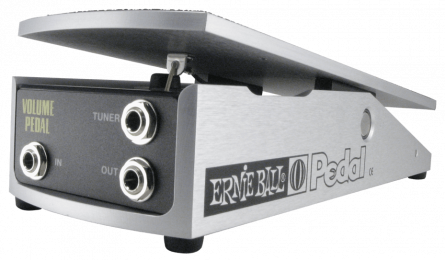
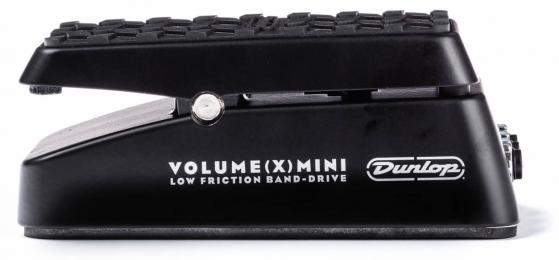
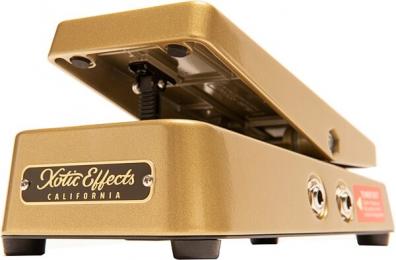
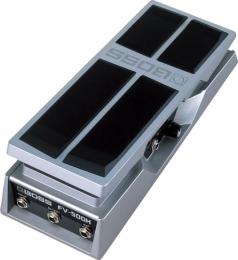
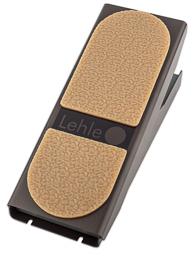
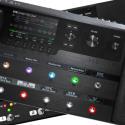
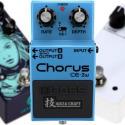
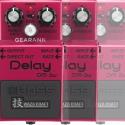
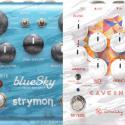
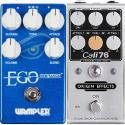

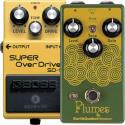
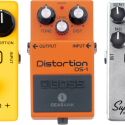
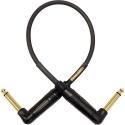
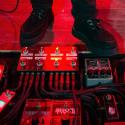
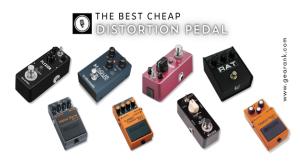
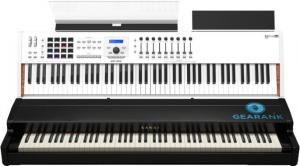
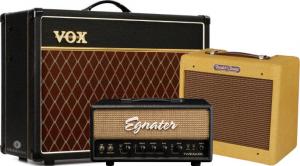
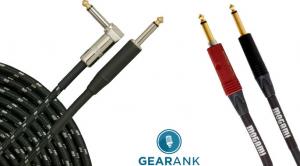
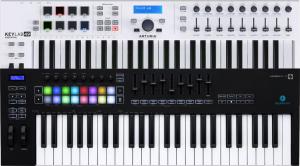
Comments
Publication of our December
Submitted by Jason Horton on
Publication of our December 2022 Edition resulted in the Boss FV-500L coming off the recommended list - it was replaced with the higher rated Xotic XVP-250K.
As a result of publishing our
Submitted by Jason Horton on
As a result of publishing our December 2021 Edition, the following volume pedal came off the recommended list above: Ernie Ball VP Jr 25K.
How good is a Earnest Deffner
Submitted by Darren Hyson (not verified) on
How good is a Earnest Deffner Volume pedal. What was the price new?
We don't have any rating data
Submitted by Jason Horton on
We don't have any rating data on the Earnest Deffner volume pedal, however they used to sell it for $31.50 according to this old price list from 2017.
Hi, I am playing with a Prs
Submitted by MARC DEVOOGHT (not verified) on
Hi, I am playing with a Prs custom 24. What do you think the best volume pedal for that guitar.
Regards
Marc
Our February update resulted
Submitted by Jason Horton on
Our February update resulted in the following pedals coming off the recommended list above, but you can still see our analysis of them:
As a result of our June 2020
Submitted by Jason Horton on
As a result of our June 2020 update, the following volume pedal came off the recommended list above, but you can still see our analysis of it:
As a result of our November
Submitted by Jason Horton on
As a result of our November 2018 update the following volume pedals came off the recommended list above:
Due to being discontinued, we
Submitted by Jason Horton on
Due to being discontinued, we've removed the following volume pedal from our recommended list above, however you can still read what we have to say about it: Dunlop DVP1.